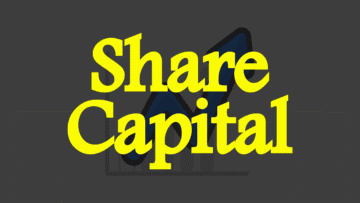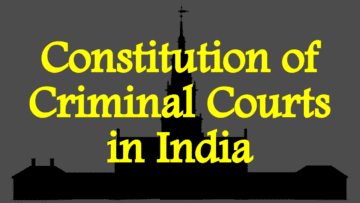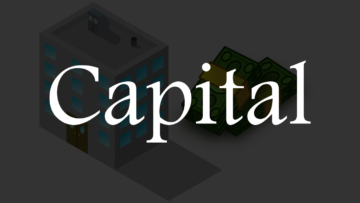The main objective of the business is to earn profit by providing goods and services to the buyers, for this business requires various resources like land, labour, products, etc. for which the business requires capital (assets) and it is raised in various ways according to the nature or objective of the business such as investment by owners, by issuing shares, by taking loan, by issuing debentures, or by using other financial instruments.
Which method is good for raising capital, and how many methods are available, depends upon the nature of the business. For example, in sole proprietorship and partnership business, loan, owner’s investment, etc. are the methods available but in a company there are more methods available to raise capital like loan, shares, debentures, etc. and for a company issuing shares is the best method as it does not require payment of interest or principal within the time limit like loan but payment of dividend is applicable.
The capital raised through shares is called share capital, and this method is only available in a company, and the company needs to follow proper guidelines to raise it. If a business wants to raise capital by issuing shares, it needs to register the business as a company by following the proper guidelines set by the regulatory law. Note: In some types of companies, raising capital freely through shares is restricted.

Table of Contents
What is Share Capital?
Share capital is the capital raised by issuing shares to investors, and it is made up of two words: shares and capital, wherein shares means a means of raising capital, and capital means money or its equivalent or assets. In simple terms, the capital raised through shares is called share capital. When shares are issued to investors, in return, they are given equal amount of ownership of the business, and this is recorded in the accounting books as share capital and shown on the liability side in the balance sheet.
Share capital is permanent in nature as it exists as long as the business continues. It is not like other resources like loans, debentures, etc., as there is no time limit to repay it. The company issues share to investors who want to acquire ownership in the company, in return the company gets money or an equivalent amount, and those who buy the shares are called shareholders and have rights over the company as per the nature of the shares.
Share capital is classified into various types, such as authorised share capital, issued share capital, subscribed share capital, called-up share capital, uncalled share capital, paid-up share capital, etc., and it shows the status of the share capital. All types of share capital have their own characteristics that make each other different. Note: Only paid-up share capital is shown in the balance sheet, and the company is not entitled to issue more share capital than the authorised share capital shown in the memorandum of association.
Features of Share Capital
Following are the features of share capital:
1. Capital:
Share capital is a capital (asset) raised by the shareholders by issuing shares, and it is permanent in nature. It is raised in exchange for ownership of the company, so it is neither an asset nor a liability for the company in the true sense, but it is recorded on the liability side of the balance sheet, and what the shareholders bring in return is recorded on the asset side of the balance sheet, this is due to separate legal entity, concept of dual aspect, concept of business entity etc.
2. Increased or Decreased:
Share capital can be increased or decreased, but before doing so, the company has to fulfill the legal formalities prescribed by the regulatory law. Share capital can be increased by issuing new shares and decreased by buyback of shares, reduction in capital, etc., and this requires approval from the board of directors, existing shareholders, and filing of updated records with the Registrar of Companies, and if required, approval from the government authority. Note: No one has the right to act beyond the law.
3. Divided:
Share capital is divided into various shares, and each share has the same minimum value and when all the shares and their value are added together then it is called share capital. In simple language, share capital is a group of shares and represents the total amount raised by issuing shares. For example, if a shareholder has taken 1000 shares of the company at the rate of Rs 10, then the share capital will be Rs 10000, i.e., this Rs 10000 share capital is made up of all the shares by adding them together.
4. Recorded in the Books:
Share capital is recorded in the books in a systematic manner following proper guidelines, as all monetary transactions in the business are recorded in the respective books. It is a long-term resource and a liability for the company, so it is shown under the heading of shareholders’ funds in the liability side of the balance sheet. (Balance Sheet > Equity and Liabilities > Shareholders’ Funds > Share Capital)
5. Classified:
Share capital is classified into various parts according to its characteristics, and this classification helps in understanding share capital and its stages. Generally, it is classified into authorized share capital, issued share capital, subscribed share capital, called-up share capital, uncalled share capital, paid-up share capital, reserved share capital, etc., and each type of share capital has its specific meaning, which plays an important role.
6. No Obligation:
Share capital is raised by exchanging ownership and money with the company and investors due to which the company is not liable to pay the share capital until the winfing up because the investors from whom the company has raised the capital become the owner of the company but at the time of closing if resources are available after paying others then the share capital is distributed among the shareholders with the respective ratio and if resources are not available then the shareholder does not receive anything.
Types of Share Capital
Following are the types of share capital:
1. Authorized Share Capital:
Authorised share capital is the total amount of share capital that the company is entitled to raise from shareholders by issuing shares. It is also commonly referred to as nominal share capital or registered share capital and is mentioned in the memorandum of association of the company.
A company is not authorised to issue more than the authorised limit, but if it wants to issue more than the authorised limit and is eligible to do so, it can do so by following the legal procedure. A company can increase or decrease its authorised share capital by following the legal procedure mentioned in the governing law.
2. Issued Share Capital:
Issued share capital is a part of the authorized share capital that the company issues to investors for subscription. In simple words, it is the amount that the company wants to raise from investors by issuing shares. For example, the authorized share capital is 10 crores, and the company wants to raise only 7 crores, then in this case, 7 crores is the issued share capital. It is not mandatory to issue all the shares at once as it affects the financial position of the company, that is why the company does not issue all the shares at once and the company keeps some part of the authorized share capital in reserve.
| Issued Share Capital = Authorized Share Capital – Unissued Share Capital |
3. Unissued Share Capital:
Unissued share capital is a part of the authorized share capital that the company does not issue to raise capital or it is an amount that the company does not want from investors right now. For example, a company has 10 crore authorized share capital, out of which the company has issued 7 crore share capital; in this case, the remaining 3 crore is unissued share capital. Unissued share capital is issued when needed, but if it is reserved, then it is issued only at the time of winding up of the company.
| Unissued Share Capital = Authorized Share Capital – Issued Share Capital |
4. Subscribed Share Capital:
Subscribed share capital is a part of the issued share capital, and it is the part that investors are willing to subscribe to of the issued share capital. In simple words, it is the amount that is subscribed by the investor. Subscribed share capital is not necessarily the same as the issued share capital because sometimes the share is oversubscribed or sometimes undersubscribed. If the share is oversubscribed, then the company allots shares using pro-rata allotment and returns the oversubscribed amount to the investor.
| Subscribed Share Capital = Issued Share Capital – Unsubscribed Share Capital |
5. Unsubscribed Share Capital:
Unsubscribed share capital is the portion of the issued share capital that is not subscribed by investors. For example, the issued share capital is Rs 7 crore, out of which Rs 6 crore is subscribed by investors, and the rest is not, in this case, the remaining Rs 1 crore is called the unsubscribed share capital.
This happens due to many reasons, such as a lack of confidence in the company, people are not aware of the issue of shares, market changes, etc. Note: The minimum percentage limit of subscription is set by the regulatory authority, and if this limit is not met, the share issue is cancelled, and the entire amount is refunded to the investor. For example, in India, at least 90 percent of the shares must be subscribed.
| Unsubscribed Share Capital = Issued Share Capital – Subscribed Share Capital |
6. Called-Up Share Capital:
Called-up share capital is a part of the subscribed share capital that the company calls up from the investors. When the shares are subscribed, the company allots shares accordingly, and when the money is required, then a certain percentage of the amount is called up from the investors, and if anyone fails to pay the called-up amount, then appropriate action is taken against them, like forfeiting their shares, etc. Generally, the company does not call up the entire amount of subscribed capital at once; instead, it calls it up in installments.
| Called-Up Share Capital = Subscribed Share Capital – Uncalled Share Capital |
7. Uncalled Share Capital:
Uncalled share capital is a part of subscribed share capital that is called up by the company from the investor, and once the company calls it, it is no longer uncalled share capital. The company does not call up the entire amount at once; it calls it up from time to time as and when the money is required, and until the subscribed amount is fully called up, the uncalled share capital remains in the company. For example, subscribed share capital is 6 crores and called-up share capital is 2 crores; in this case, the remaining 4 crores is the uncalled share capital.
| Uncalled Share Capital = Subscribed Share Capital – Called-Up Share Capital |
8. Paid-Up Share Capital:
Paid-up share capital is a part of the called-up share capital that is paid by the investor to the company. When the company needs money, it calls for the amount from the investors, and if all the investors pay the full called-up amount, then the whole amount is called paid-up share capital. In simple words, all the amounts paid by the investors to the company in respect of the shares is called paid-up share capital. Paid-up share capital is the actual amount that is used by the company and is shown on the liability side of the balance sheet. If the full called-up amount is not paid by the investor, then the remaining amount is called the arrear amount.
| Paid-Up Share Capital = Called-Up Share Capital – Arrear Amount |
9. Reserved Share Capital:
Reserved share capital is a portion of the authorised share capital that remains in reserve for the time of winding up of the company. The main purpose of keeping a portion of the authorised share capital in reserve is to protect the rights of the creditors from any untoward event in the company. It is demanded from the investors only when the company is being wound up. This helps the creditors to trust the company as they feel secure, as the company has sufficient reserves to meet any untoward event.
Read Also:
- Share: Meaning, Features, and Types.
- Company: Meaning, Features and More.
- Advantages and Disadvantages of the Company
- Incorporation of a Company: Meaning, Procedure, Advantages and Disadvantages, etc.
- One Person Company: Meaning, Features, and More.
- Private Limited Company: Meaning, Features, and More.
- Public Limited Company: Meaning, Features and More.
QNA/FAQ
Q1. What is share capital?
Ans: Share capital is the capital raised by issuing shares to investors.
Q2. Is the share capital of a permanent nature?
Ans: Yes, the share capital is of a permanent nature.
Q3. On which side share capital is shown in balance sheet?
Ans: Share capital is shown on the liabilities side of the balance sheet
Q4. Write types of share capital.
Ans: Following are the types of share capital:
1. Authorized Share Capital
2. Issued Share Capital
3. Subscribed Share Capital
4. Called-Up Share Capital
5. Uncalled Share Capital
6. Paid-Up Share Capital
7. Reserve Share Capital
Q5. Write the features of share capital.
Ans: Following are the features of share capital:
1. Share capital is the capital (asset) of the company.
2. Share capital is permanent in nature.
3. Share capital can be increased or decreased.
4. Share capital is recorded in the accounting books.
5. Share capital is classified into various types.
6. Share capital is divided into various shares.
7. The company has no obligation* to pay the share capital.
8. Share capital is shown in the balance sheet.
9. Share capital has a nominal value.













